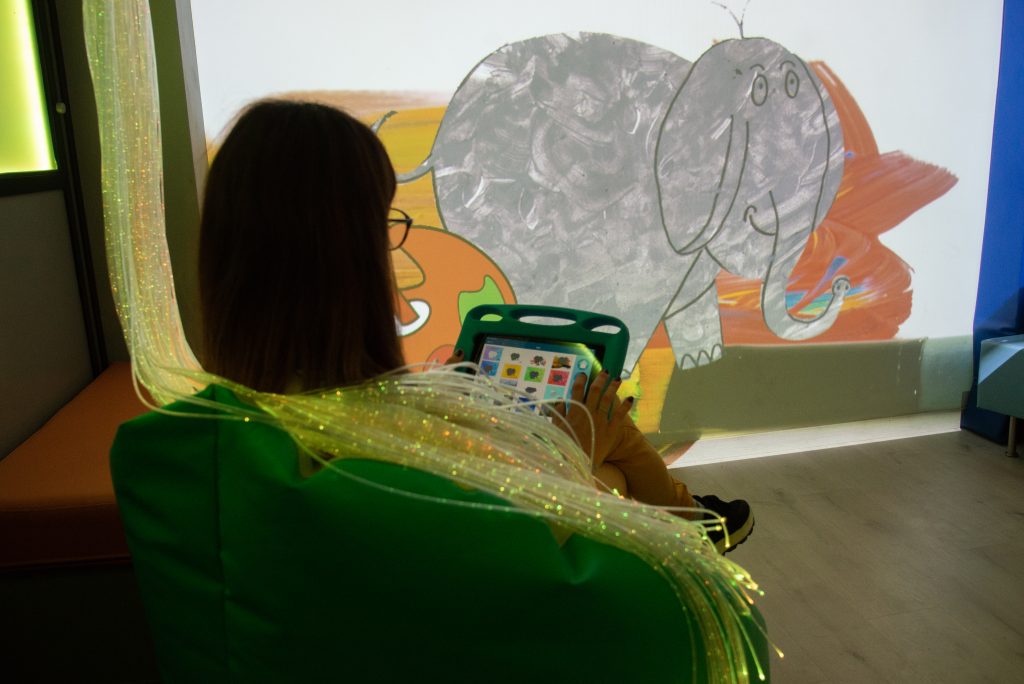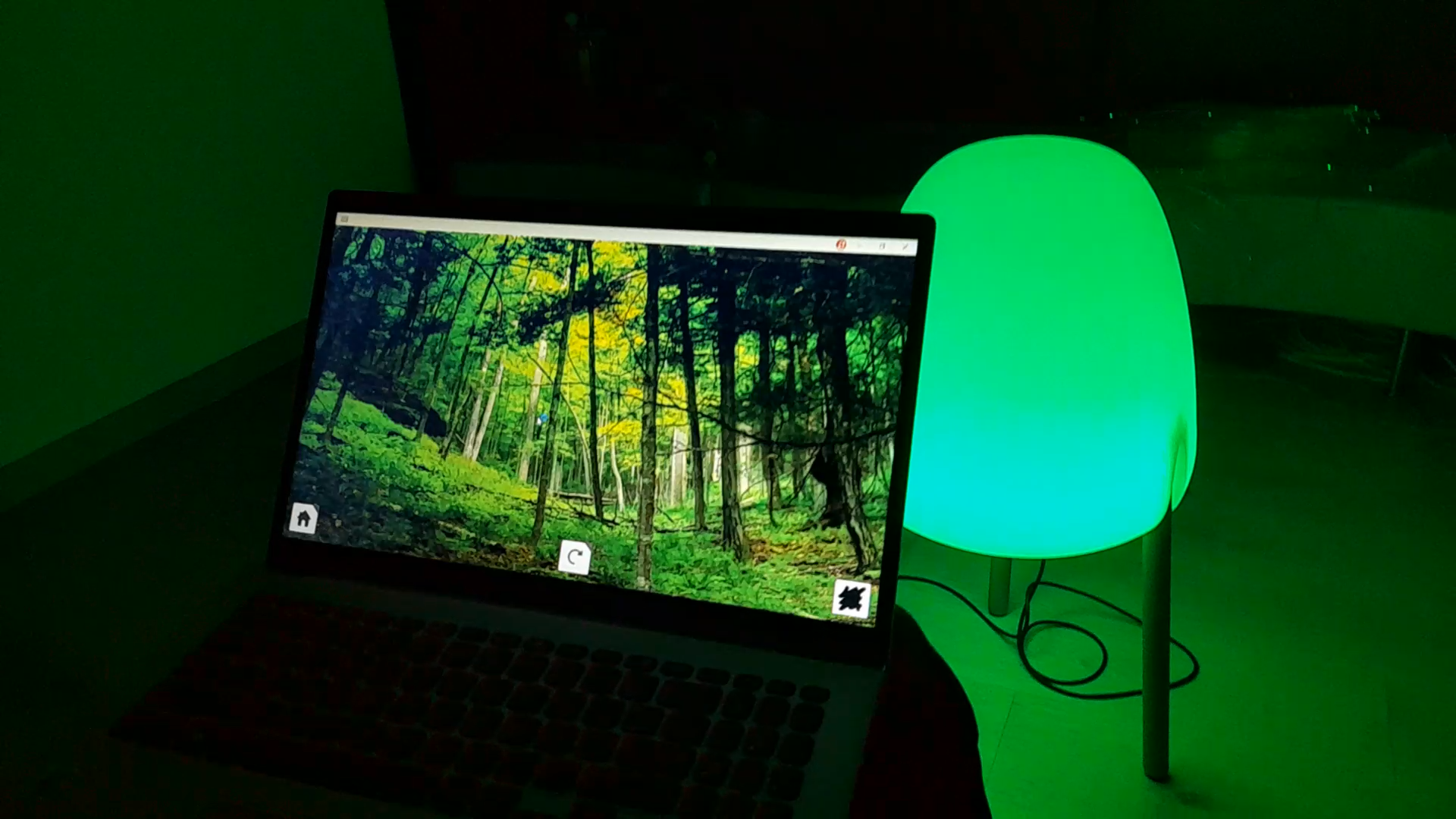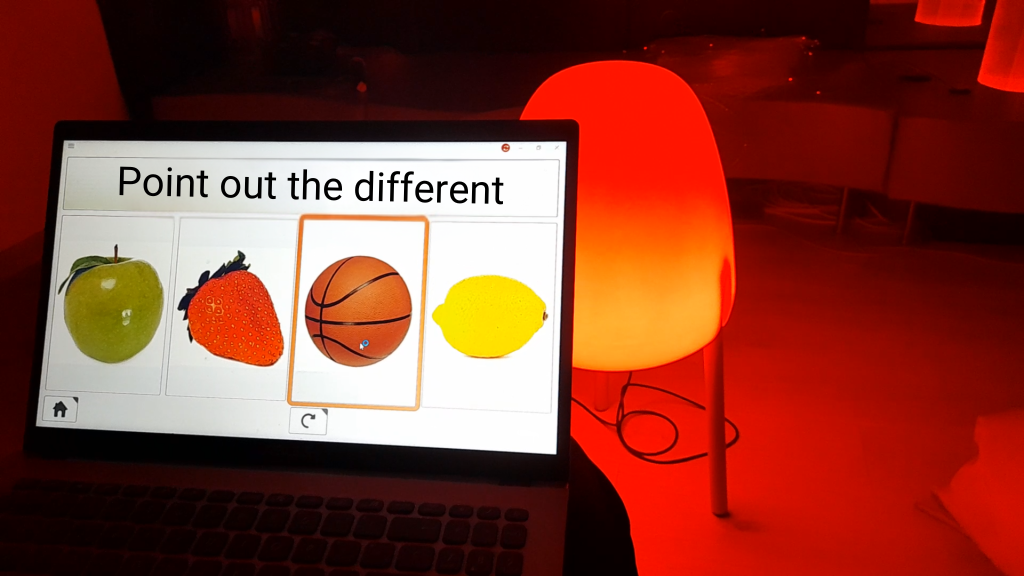Multisensory Environments are carefully designed spaces that provide controlled sensory stimulation to enhance physical, cognitive, and emotional well-being.
These environments are widely used in therapy and education, especially for individuals with sensory processing disorders, autism, intellectual disabilities, and neurological conditions. These spaces promote sensory integration, emotional regulation, communication skills, and overall engagement by offering a safe, interactive space where users can explore and connect with their surroundings.
These spaces offer transformative room where communication, sensory integration, and autonomy converge for AAC users. By reducing anxiety and providing carefully controlled sensory input, these rooms enhance focus, social interaction, and cognitive skills. Tools like Luminea Remote and Grid 3 take this a step further, allowing users to control sensory elements through their AAC systems, making therapy more engaging and personalized.
It allows users to enhance real-life communication as well as improve their access method, such as eye-tracking, providing them with meaningful experiences that promote growth, interaction, and motivation.
Curious about how this works? Let’s explore together and discover the endless possibilities multisensory spaces offer for AAC users!

Why are multisensory spaces powerful tools for AAC users?
Multisensory rooms go beyond sensory stimulation—they offer a transformative space where communication and connection thrive for AAC (Augmentative and Alternative Communication) users. These environments create a calm, controlled setting that helps reduce anxiety and sensory overload, two common barriers for individuals who rely on AAC. With reduced stress and a more balanced sensory experience, users can focus more effectively on their communication systems, making their interactions more meaningful and purposeful.
For many AAC users, sensory processing challenges can complicate their ability to engage with their surroundings. Multisensory rooms offer carefully managed sensory input, promoting better sensory regulation and integration. This enhanced sensory processing creates a solid foundation for learning and using AAC devices, as it increases the user’s awareness and responsiveness to both their environment and communication partners, as well as with their therapist.
In addition to fostering individual communication growth, multisensory spaces become vibrant hubs for social interaction. They encourage spontaneous communication, collaboration, and shared experiences in a natural, non-threatening environment. Whether users explore the room with a caregiver or engage in group activities with companions, these spaces provide real-life communication opportunities that build social skills and reinforce the practical use of AAC systems.
Ultimately, multisensory environments empower AAC users by supporting autonomy and self-expression in ways that traditional settings cannot. By tailoring stimuli to individual needs, they open doors to deeper engagement, connection, and growth in communication.

6 proven therapeutic benefits of Multisensory Environments for AAC users
-
Enhance sensory regulation and emotional balance
Controlled sensory input reduces anxiety and sensory overload, promoting a calmer state that improves focus and readiness for communication.
-
Strengthen cause-and-effect understanding and cognitive development
Real-time responses from sensory elements help users grasp cause-and-effect relationships, critical for developing cognitive, decision-making, and communication skills.
-
Improve attention, visual tracking, and memory
Sensory environments enhance attention span and visual tracking abilities, reinforcing memory and symbol retention crucial for AAC communication.
-
Support social interaction and turn-taking
Multisensory spaces provide structured, low-pressure opportunities for practicing social communication, turn-taking, and interactive play with peers and caregivers.
-
Increase motivation and active engagement in therapy
The highly stimulating and customizable nature of sensory rooms keeps users motivated, transforming therapy into an enjoyable and meaningful experience.
-
Develop Access Method Proficiency
These environments allow users to practice and refine access methods (e.g.: eye gaze, switch control) in a flexible, engaging setting, improving accuracy and functional communication.
Access and enjoy your sensory room with AAC
At Qinera, we’ve developed Luminea Remote, a groundbreaking tool created by our innovation and development team to integrate eye gaze devices and other access methods into sensory rooms, while also making lighting elements more accessible for all users. Luminea Remote allows users to control Luminea lighting devices directly from Grid 3 and Communicator 5, two of the most powerful AAC platforms available. This integration enables sensory room users to interact with their environment using their personalized augmentative communication systems and preferred access methods, making the entire experience more inclusive and empowering.
Grid 3 is known for its advanced capabilities, especially in eye gaze access, where its use of active cells ensures an optimized experience for every user. Eye gaze users often face dual challenges: improving access methods while simultaneously developing symbolic language skills. Luminea Remote transforms this process by placing it within a stimulating, multisensory environment that reinforces learning with coherent and meaningful stimuli. This setting not only enhances engagement but also boosts motivation, creating an exciting and effective therapeutic tool.

Additionally, Luminea Remote offers downloadable grid sets with a variety of interactive activities designed to promote communicative intent, decision-making, and interaction. These activities allow therapists to work on different access methods in a fun, dynamic way, turning every session into an immersive game-like experience that encourages exploration and connection.
Grid 3 and Luminea Remote: Enhancing communication and interaction
Grid 3 offers a wide range of interactive activities that integrate with Luminea Remote, turning sensory rooms into dynamic learning spaces for AAC users. These activities help users improve precision, make choices, and practice communication skills in a fun and meaningful way.
Let me give you two examples of how Luminea Remote and Grid 3 can transform therapy into a more meaningful and interactive experience:
- Concept and vocabulary building: Activities can associate colors with objects or concepts, such as “What color is a strawberry?”—ideal for developing core vocabulary and early learning concepts.
- Functional communication practice: Users can turn devices like bubble tubes on and off with their communicator, promoting high-frequency vocabulary and offering consistent, real-world consequences for communication efforts.
Free Project Design
If you want to learn more about the benefits of Multisensory Environments or see how you could adapt it to your space, therapeutic goals, and users, you can send an email to hello@qinera.com.












